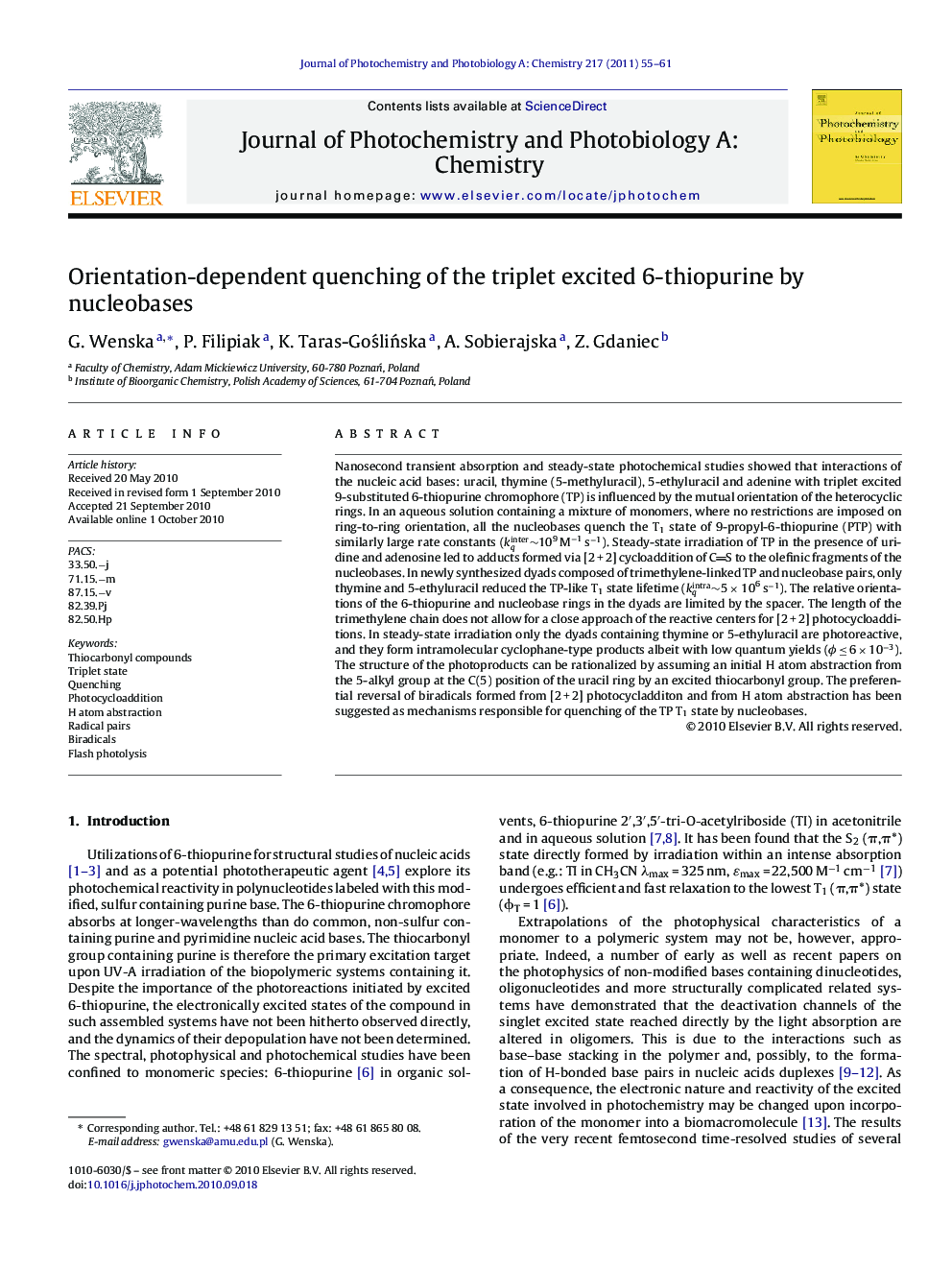| Article ID | Journal | Published Year | Pages | File Type |
|---|---|---|---|---|
| 27555 | Journal of Photochemistry and Photobiology A: Chemistry | 2011 | 7 Pages |
Nanosecond transient absorption and steady-state photochemical studies showed that interactions of the nucleic acid bases: uracil, thymine (5-methyluracil), 5-ethyluracil and adenine with triplet excited 9-substituted 6-thiopurine chromophore (TP) is influenced by the mutual orientation of the heterocyclic rings. In an aqueous solution containing a mixture of monomers, where no restrictions are imposed on ring-to-ring orientation, all the nucleobases quench the T1 state of 9-propyl-6-thiopurine (PTP) with similarly large rate constants (kqinter∼109 M−1 s−1). Steady-state irradiation of TP in the presence of uridine and adenosine led to adducts formed via [2 + 2] cycloaddition of CS to the olefinic fragments of the nucleobases. In newly synthesized dyads composed of trimethylene-linked TP and nucleobase pairs, only thymine and 5-ethyluracil reduced the TP-like T1 state lifetime (kqintra∼5×106 s−1). The relative orientations of the 6-thiopurine and nucleobase rings in the dyads are limited by the spacer. The length of the trimethylene chain does not allow for a close approach of the reactive centers for [2 + 2] photocycloadditions. In steady-state irradiation only the dyads containing thymine or 5-ethyluracil are photoreactive, and they form intramolecular cyclophane-type products albeit with low quantum yields (ϕ ≤ 6 × 10−3). The structure of the photoproducts can be rationalized by assuming an initial H atom abstraction from the 5-alkyl group at the C(5) position of the uracil ring by an excited thiocarbonyl group. The preferential reversal of biradicals formed from [2 + 2] photocycladditon and from H atom abstraction has been suggested as mechanisms responsible for quenching of the TP T1 state by nucleobases.
